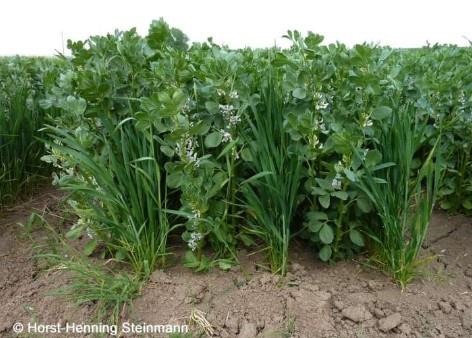
A mixture of crops: faba bean and wheat.
There are often too few flowering plants in agricultural landscapes, which is one reason for the decline of pollinating insects. Researchers at the University of Göttingen have now investigated how a mixture of crops of fava beans (broad beans) and wheat affects the number of pollinating insects. They found that areas of mixed crops compared with areas of single crops are visited equally often by foraging bees. Their results were published in the journal Agriculture, Ecosystems & Environment.
The researchers observed and counted foraging honeybees and wild bees in mixtures of wheat and fava bean and in pure cultures that only contained fava beans. "We had expected that the mixed crops with fewer flowers would be visited less frequently by bees for foraging than single crops," says Ph.D. student Felix Kirsch from the Functional Agrobiodiversity research group, University of Göttingen. "To our surprise, this was not the case."
This could be due to several reasons. "Our mixed cultures were less dense than pure cultures, which possibly increased the visibility of the flowers. This might have attracted the similarly large number of bees to the mixed cultures," suggests Dr. Annika Haß, postdoctoral researcher in the Functional Agrobiodiversity research group.
Click here to see more...